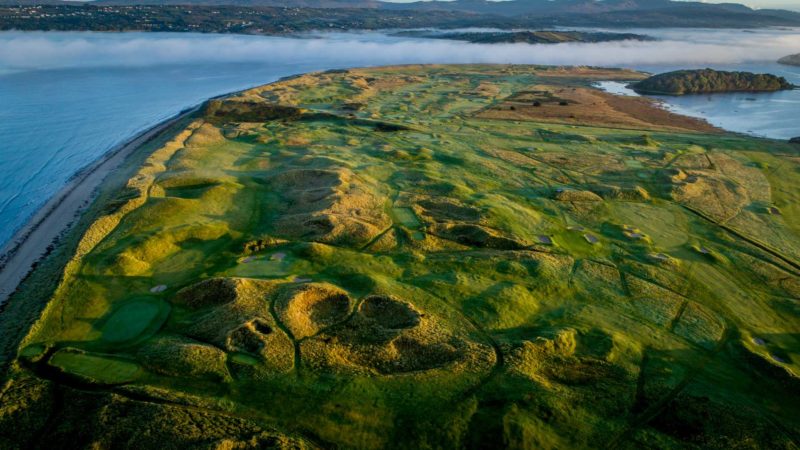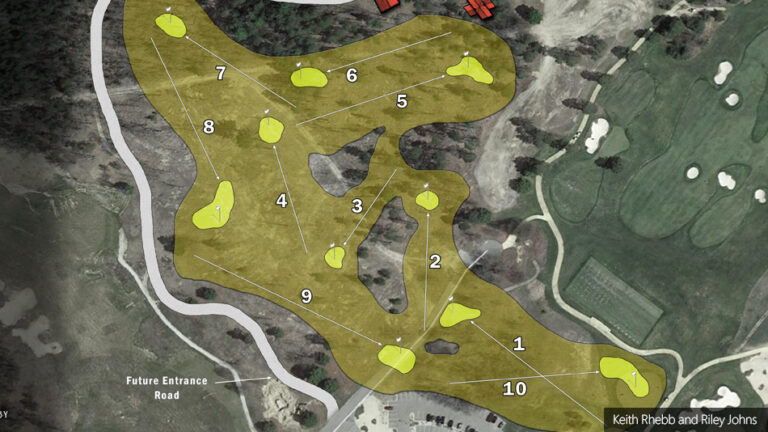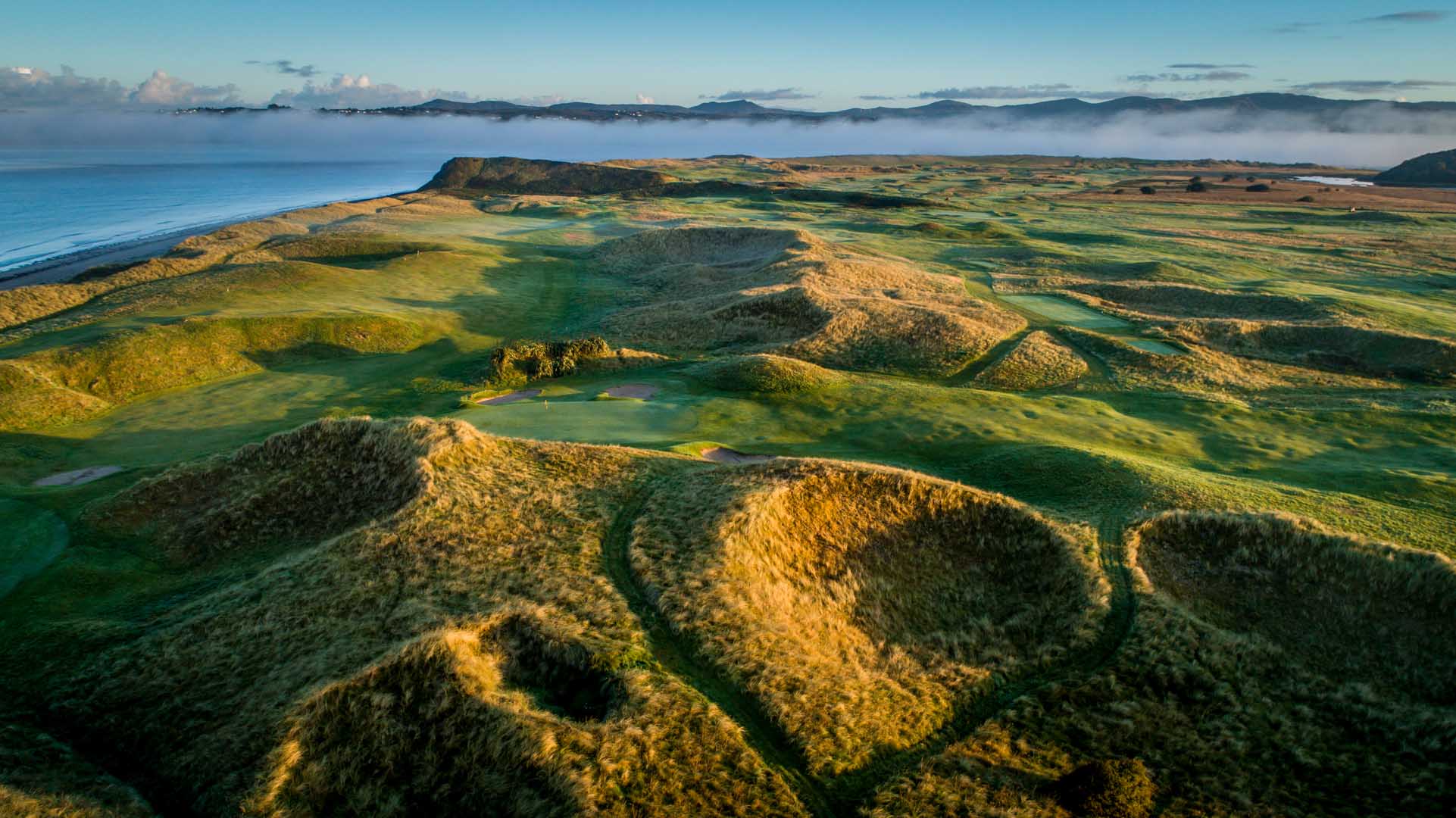Course differs from many seaside links because of routing wide enough to avoid being too punitive for those who spray the ball off the tee
LAGHY, Ireland – Ireland’s Murvagh Peninsula is a sliver of land that divides the country of Northern Ireland to the east and the Atlantic Ocean to the west and north. County Donegal in this northwest corner of the Emerald Isle has only in the past two decades been marketed as one of the island nation’s great golf destinations.
While the courses in the area have not drawn the notoriety that tracks in around Dublin or in the southwest have enjoyed, the golf experience is on a par – and in some ways better – than at the more publicized courses elsewhere.
A great example of this is Donegal Golf Club, a beast of a track that stretches a wind-swept 7,393 yards from its back set of five tees. Yet Donegal differs from many seaside links as its holes are wide shouldered enough to keep big hitters in the game without being punitive for those who spray the ball off the tee.

Donegal Golf Club was founded in 1959 on a different site with another course further inland at Tullycullion on the edge of Donegal Town. The current layout was crafted in 1976 by the great Irish golf architect Eddie Hackett, and then reworked in the years since by the inimitable Pat Ruddy, likely the most famous living Irish golf course architect (he would love that characterization).
The rolling site for the new course was leased from the Ireland Department of Lands. In 1997, the original clubhouse was demolished to make way for the current, modern building, which debuted in 1998.
Because the course is routed along the Murvagh Peninsula, which separates Donegal Bay from the Atlantic, it is known locally as Murvagh. A forest of evergreen to the south keeps it apart from the outside bustling world (as if this part of Ireland even approaches “bustling”), and Donegal Golf Club has panoramic vistas of the Bluestack Mountains and the beach – one of Ireland’s finest – that borders it to the west.
Plenty to keep the golfer focused
Donegal GC has been labeled by some as the “Muirfield of Ireland” because it has similar terrain and a layout of two nine-hole loops. The front side comprises the counterclockwise outer section – with Nos. 6-8 running along the beach, while the home half runs clockwise inside the opening nine.
The first four holes head towards the ocean. The 464-yard par-4 second features a landing area guarded by two large bunkers, a small burn on the left and two bunkers right. The approach is slightly uphill to a 35-yard-deep, narrow green surrounded by mounds and three bunkers. The 513-yard (!) fourth is another par-4 that heads across a broad expanse of pure linksland that can boggle yardage estimates. It involves a burn and five bunkers en route to a well-protected green.
The 196-yard par-3 fifth begins perhaps the best stretch of holes at the course. Named “The Valley of Tears,” the tee shot here is played to a plateaued green whose size cannot be estimated from the tee. Everywhere around this target lurks trouble and par is noteworthy; birdies are rare.

The tee at the sixth is the first chance to espy the stunning beach. The 513-yard hole – yes the same distance as the par-4 fourth – and the eighth (549 yards) are both par-5s requiring two good shots to set up approaches to sizable greens. The eighth is memorable for an elevated tee, the blindness of the opening shot and lay-up, as well as its tumbling terrain.
In between, the 428-yard seventh is a classic par-4 where the second shot plunges down to a two-tiered green that’s guarded on all sides by grassy hills. It’s the only hole here without a bunker.
The inner loop begins at the 395-yard 10th, which doglegs slightly right to left and has a green nestled just in front of a towering hill. The 406-yard 11th has an hourglass-shaped fairway and plays to a rectangular-shaped and upturned saucer-like green that requires an accurate approach.
The final three holes at Donegal GC are challenging and memorable. The 250-yard 16th, called “The Big Dunt,” has four deep bunkers protecting its green; if the wind is up (as it usually is) many members play the hole as a short par-4. You might be able to get a stroke back on the 356-yard par-4 17th. As long as the burn and left-hand rough is avoided, you can hit a wedge into the generous, but two-tiered green.
The par-4, 437-yard closer also offers a chance to end the round on a high note. The tee shot is blocked by a huge sand hill but then opens onto a wide fairway. Take one more club than normal to attack the slightly elevated green and miss the four bunkers in front.
Donegal members consider their course one of the best in Ireland and, after a round here, it’s hard to dispute that claim. The track requires pure ball-striking and the ever-present winds mandate thoughtfulness on each shot. It’s not a course for the weak at heart, yet it offers a measure of forgiveness, leading even high handicappers to have a fun time.
Donegal Golf Club was the venue for the Irish Ladies Close Championship in 1979 and 2003. In 2004, the club hosted the Men’s Irish Close Championship; the winner was Brian McElhinney, the 2004 European Amateur champion, who topped a strong field that included Rory McIlroy, at the time a 14-year-old playing in his first big tournament in Ireland.
The Ulster Senior’s Amateur Championship took place on the course in 2010 and was won by Garth McGimpsey, former captain of Great Britain & Ireland’s Walker Cup team. Ulsterman Darren Clarke, the 2011 British Open champion, called Donegal Golf Club “one of my favorite courses in the world.”
Donegal Golf Club is routinely listed among Golfworld’s “Top 100 Courses in Ireland & Great Britain.” It’s a beauty in a stunning setting and not to be missed.










